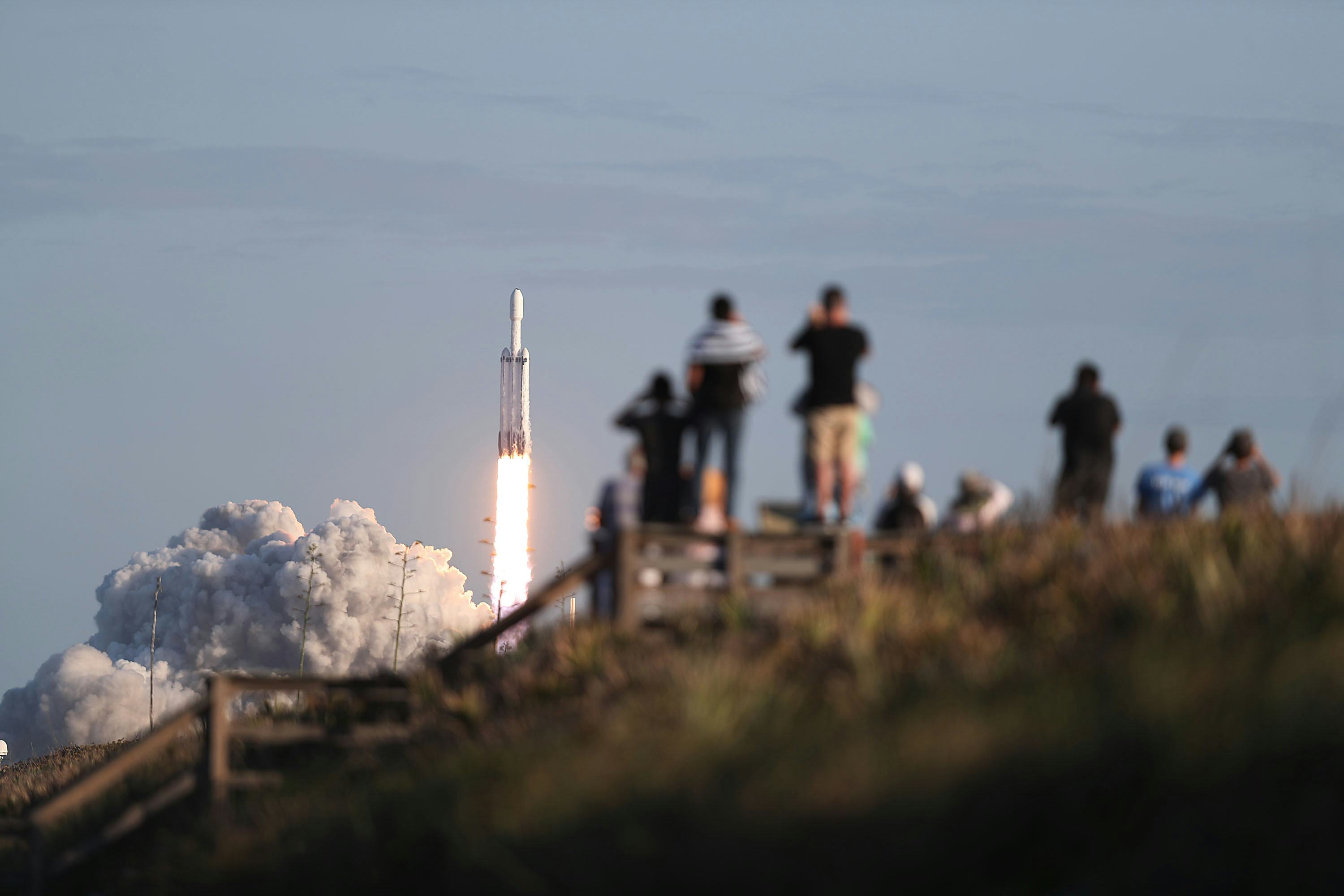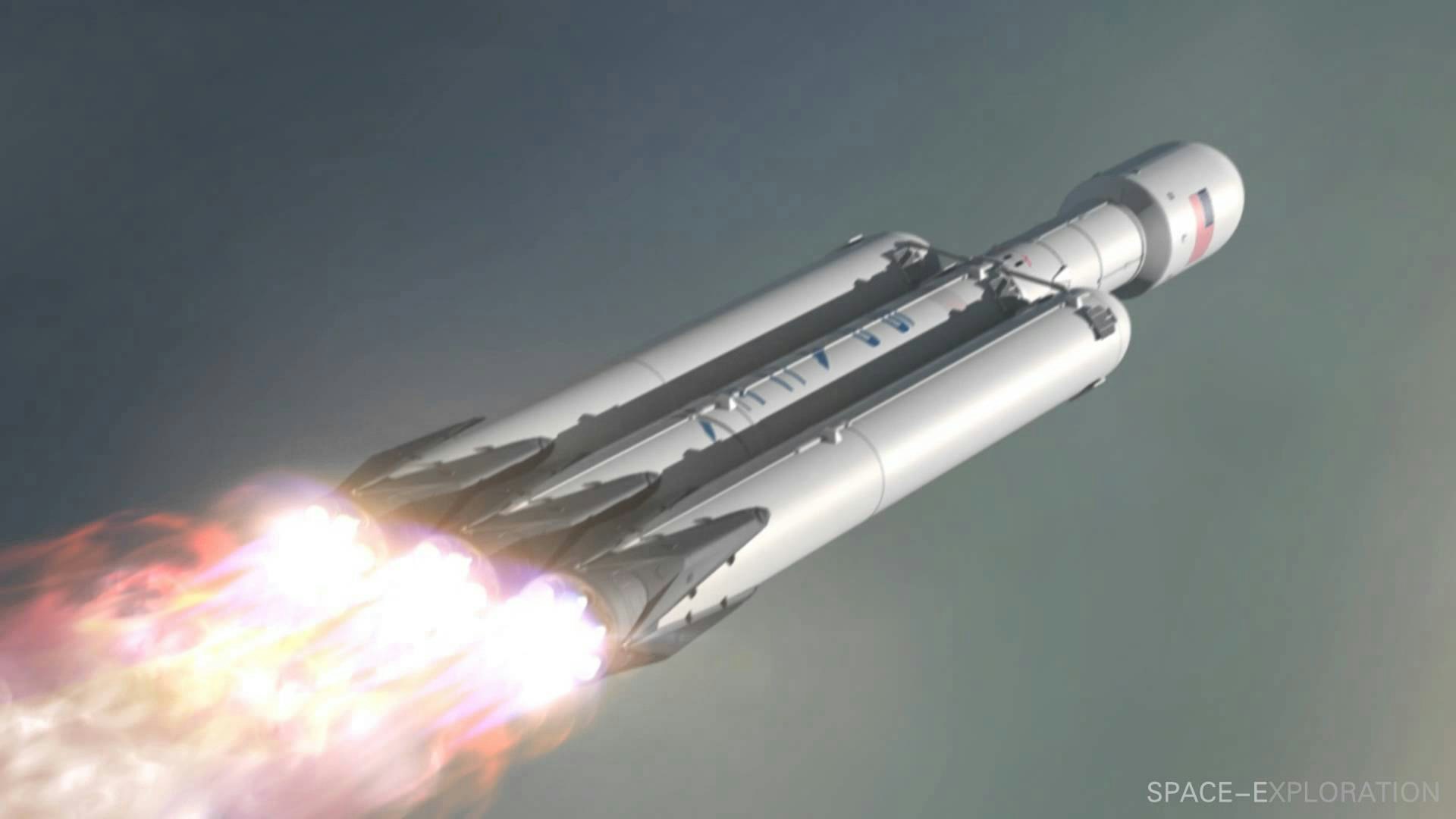
Falcon Heavy, the world’s most powerful operational rocket, just blasted off to the skies following a three-year rest. The hulking vehicle took off from NASA's Kennedy Space Center in Florida on Tuesday morning at 9:41 a.m.
This launch kicks off the secretive USSF-44 mission for the U.S. Space Force, which will deploy two payloads into Earth-centered orbit — including the TETRA 1 microsatellite, according to NASA.
Falcon Heavy: The Story Behind the Rocket
The vehicle is comprised of 27 Merlin engines spread out over three cores, roughly equivalent to three Falcon 9 rockets strapped together. That means while the rocket has the same 12-foot diameter and 230-foot height as its smaller brother, the Falcon Heavy’s 40-foot width means it looks far wider. The whole thing weighs a staggering 3.1 million pounds. By comparison, the Falcon 9 weighs just 1.2 million pounds.
The Heavy’s first mission sent up Musk’s red Roadster. The WhereIsRoadster website has been tracking the car since its launch, and it’s still up in space circling the sun.

The Falcon Heavy is capable of lifting 140,660 pounds to low Earth orbit, more than double that of the currently-operational Delta IV. SpaceX claims this figure is greater than a Boeing 737 jet plane fully loaded with crew, passengers, fuel, and luggage. Only the Saturn V, which last flew in 1973 and could send 310,000 pounds to low Earth orbit, beats the Falcon Heavy.
These upgrades come with a hefty price tag. While a standard launch for the Falcon 9 cost $62 million in 2018, the company’s website states that the Falcon Heavy costs a staggering $97 million for launch (with a recent rise due to inflation).
The monstrous rocket hasn’t been used in several years because most SpaceX missions don’t require all that power and can rely instead on the Falcon 9 rocket. The goal for SpaceX is to land all three boosters and reuse them for future missions.
On Tuesday, though, the company only tried to recover two of the first-stage boosters, which landed on ground pads near the Florida coast, according to a Space Systems Command press release.

Although the Heavy makes for an impressive ship, it could pale in comparison to what comes next. The Starship, announced in September 2017 under the name “BFR,” is expected to send 100 tons to low Earth orbit and generate 5,400 tons of liftoff thrust. The ship is huge, with its original version measuring 348 feet tall and 9.7 million pounds of mass. SpaceX aims to launch Starship for its first orbital flight test sometime this month.
The ship is designed to be fully reusable, with its Raptor engines fueled using liquid oxygen and methane, unlike the liquid oxygen and rocket propellant used for the Merlin engines. This use of an alternative fuel could enable voyagers to harvest fuel on other planets and set up propellant depots, which could help power trips to Mars and beyond.







